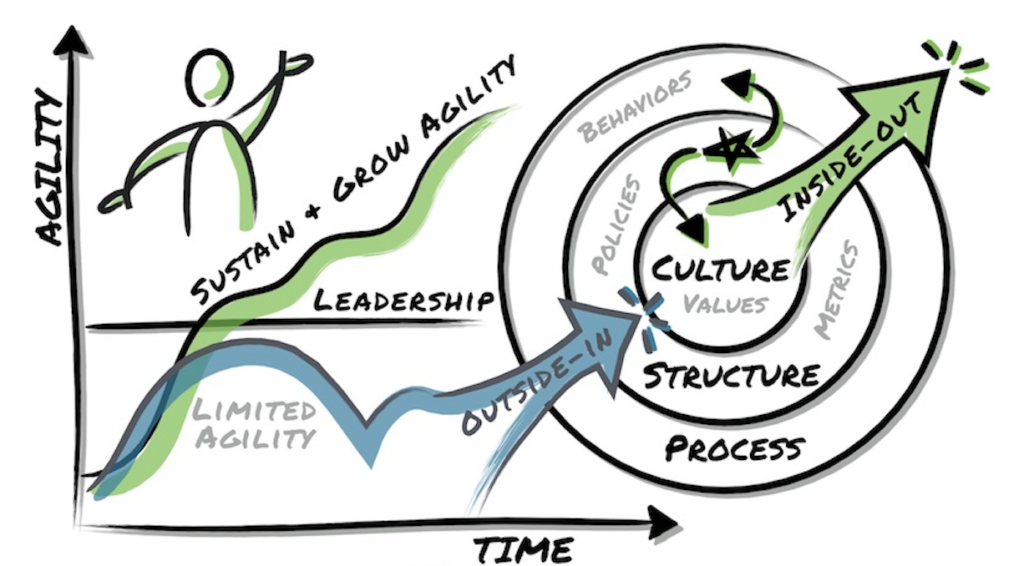
I have been leading a number of agile meetups recently speaking about the topic of agile leadership. Through this journey an important message has begun emerging focusing on three main questions:
- Why are we talking about Agile at all?
- Why Agile initiatives often fail in organizations?
- What leadership is required to enable Agile ways of working?
Through this journey, the points I have been expressing have been forming into a type of manifesto – while most leaders focus on the items on the right, agile leaders have come to value those items on the left. While I am not quite comfortable yet with this being a manifesto for agile leaders, I am open to collaborating and co-creating such an artifact.
Why are we talking about Agile at all?
Before we can get to how to enable agile ways of working, we must understand the “why” behind agile. Many leaders wrongly assign agile = faster, when in fact agile will initially slow things down. What?
Viewing traditional project management approaches through the lens of a Model of complexity developed by Ralph Stacey, we can follow the path of a traditional approach down and to the left by reducing what uncertainty first (requirements, plans, budgets, etc.) before how uncertainty (designs, development, testing, etc.). Milestones enable key checkpoints and signoff on each stage of the project (analysis, design, etc.).
Watermelon Projects
Traditional projects tend to start out Green (everything is under control). It remains this way until we dive into the “how” of the project and our estimates turn out harder than we planned, we run into unforeseen issues, we realize we did not fully understand our stakeholder perspectives, stakeholders change their mind on priorities and requirements, etc. And while project turns Yellow indicating there is increased risk, project managers continue reporting Green to portray they are managing the risk and have everything under control via buffers, change control boards, scope management, etc. This game is played often until it is too late – signaling a failure to meet the planned goals of the project – Red status. We label this a watermelon project – green on the outside, red on the inside.

Agile Approaches
It wouldn’t be fair to pick on traditional approaches alone, so we will follow an agile path using this same model. Agile approaches follow a much more curvy path from unknown to known, exploring what and how together. In fact, they start working on “how” before even knowing all of the “what” aspects of the project. Seems crazy! How do we know what to work on? How do we measure progress? How will we budget this?
Agile approaches often start out Red – that is due to very little working at the outset of a project and yet trying to demonstrate a small piece of it – platforms are not ready, dependencies are broken, initial feedback indicates we are not aligned with our stakeholders, etc. Believe it or not, this is Agile working! Many of the activities we leave to the end of a traditional approach is done very early in an agile approach – risk is brought forward and often makes it feel as if nothing is working and everything is quite slow.
If we are doing Agile correctly, we begin to address risk, align stakeholders and begin delivering value. However, this path is not easy or fast. It is hard work with many failed attempts.
These six statements have been key to my personal growth as a leader and coach, as well as they have helped many leaders I have been engaged with over the years.
If you are interested, feel free to share your manifesto statements in the comments below, or email them to me if you wish not to expose your proposed statements. I will collect this list, along with those to share them, to create a team to refine this message.
For those that are interested, the three flip charts I create in my talk are shared below in a digital form.

